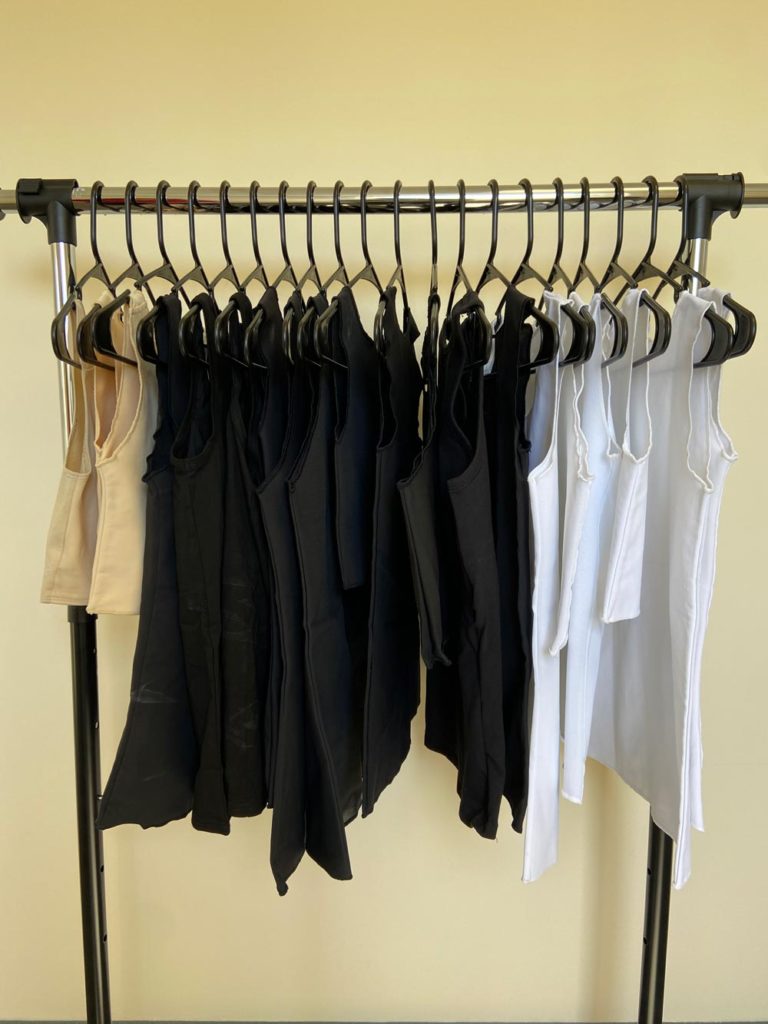For Trans Men, Binding Doesn’t Need To Be A Pain
By Jane Latus
For better or worse, it’s one of the first things most people subconsciously notice when sussing out someone else for the first time: whether they have breasts and are “therefore” male or female.
Of course, gender identity is a spectrum, and can be fluid. And bodies are widely diverse. But in a rigidly binary world, the majority equates breasts with womanhood. So, if you have them, and are male or non-binary, you may want to be seen as such in others’ eyes. More importantly, you probably want to look the part in the mirror, in your own eyes.
This is why binding is a daily part of dressing for many trans men, at least until (and if) they have top surgery. But unlike other aspects of getting dressed, which are taught starting in toddlerhood, no one teaches you how to do it. And doing it incorrectly can be painful. The Middlesex Health Center for Gender Medicine and Wellness is working to change that, by not only teaching how to bind, but even doing a first-of-its-kind study.
“Especially when you reach adolescence and have things you don’t want to show, who do you turn to? We want that to be a health care professional,” says Janine Stoner, an occupational therapist at Middlesex Health.
What she absolutely doesn’t want is people to make their own binders, or use bandages or duct tape: “That’s a tourniquet,” she says. “We want to make sure people are safe, especially an already marginalized community.”
Stoner isn’t just talking about physical health: “This is essential to people feeling, finally, congruent with their appearance. If you’re a trans male, it decreases your anxiety. It becomes essential for your emotional wellbeing.”
Making Patients Comfortable
 Looking for information online or from friends is less likely to accomplish what Stoner wants to do for her patients: make them feel confident in their appearance, but also be physically comfortable. “We did a survey, and we discovered that 80 to 90% had discomfort or injury, or some negative impact, from binding, but none of them told their doctor,” she says, adding that this data is in keeping with other surveys.
Looking for information online or from friends is less likely to accomplish what Stoner wants to do for her patients: make them feel confident in their appearance, but also be physically comfortable. “We did a survey, and we discovered that 80 to 90% had discomfort or injury, or some negative impact, from binding, but none of them told their doctor,” she says, adding that this data is in keeping with other surveys.
Help from an occupational therapist – who specializes in helping people increase their independence with Activities of Daily Living (ADLs) – will help trans men avoid the skin irritations, sore muscles, restricted breathing and nerve compression under the armpits that they might otherwise suffer.
“You want to present in the gender you are, and feel comfortable, and do it safely,” says Stoner.
Her work has led to the current study underway at Middlesex Health on the pulmonary effects of binding. She welcomes new participants with open arms. [If you are at least 18 and bind on a regular basis, see details below.]
Participants will be measured, given a breathing test, and asked some questions during a one-hour-max visit. They will take home a small breathing meter to use at home twice daily for a week.
Here’s the goal, says Stoner: “If we can find the binder that’s least restrictive but does the job [appearance-wise], that’s the one for you.”
It really bugs Stoner that any trans men might assume that having back pain, or any other discomfort, is unavoidable. “No one should be in pain from getting dressed.”
Cisgender people ought to be able to relate, she adds. Everyone wants to be comfortable, and “It’s a good day when you wear something that makes you feel good.”
Part of a Comprehensive Care Plan
Occupational therapy is one of the wide range of services Middlesex provides through its Center for Gender Medicine and Wellness. Others are primary care, hormonal therapy, behavioral health services, continence and pelvic health therapy, gender affirming surgery, physical rehabilitation, infectious disease testing and treatment, and voice therapy. There are around 1,200 trans and gender non-conforming patients in the program.
“We’re little, but we really are looking to make a difference in people’s lives, especially those who were less served before,” says Stoner. Personally, she sees teaching how to bind safely is just another aspect of being an occupational therapist. “Binding is an ADL. OTs do ADLs.”
An appointment with Stoner goes like this: she measures in three areas to fit you to the right size. She has you try out a few sizes and styles from samples that she keeps in stock. She makes sure you are happy with how you look and feel. Next, she’ll review safety guidelines created by a consulting with other health professionals and colleagues. Finally, you’re taught some simple exercises to avoid backache.
Unlike bras worn for support, a binder has a different purpose. It is worn to compress breasts, flattening them so the chest appears masculine. Also, unlike sports bras that you pull on overhead, you may step into a binder.
“Stepping in is definitely the easiest way to do it, because overhead is very difficult to do when it’s so tight, and also you need a lot of scapular movement,” says Stoner.
Binders look like tight tank tops, and typically come in two lengths. Stoner says you can get a binder from various sources, including online retailers. For those needing financial help to obtain them, Middlesex Health works with Health Care Advocates International of Stratford to provide free ones. Anyone needing help to obtain them can contact Tony Ferraiolo at tonyferraiolo@hcaillc.com or contact HCAI’s Youth and Family Program at www.hcaillc.com.
Lest anyone fear that compressing the chest is dangerous, or worry that it could lasting health damage, Stoner says …. “It’s a basic part of dressing. Why wouldn’t you tell someone who is trans to do it?” She says while there are risks, the risks can be minimized if binding is done correctly.
The key precaution, other than to have a good fit, is to not wear it 24/7. Don’t sleep in your binder. Wear it only 8 to 10 hours at a time. Take an occasional day off.
“If you’re in a gym, and you’re a trans man, you’re going to want your binder on,” she says. If you want an intense cardio workout, though, she says a binder might hinder your performance (not to mention trap sweat). In that case, she says, “It’s a personal decision. You have to weigh the pros and cons.”
Overall, she recommends closely monitoring breathing patterns and the comfort of breathing when working out while wearing a binder. She says it is also important to shower and change as soon as possible after working out to decrease skin irritation.
The Human Rights Campaign awarded Middlesex Health its fourth “LGBTQ Healthcare Equality Leader” designation last year. The Human Rights Campaign Foundation is the nation’s largest LGBTQ civil rights organization.
Details on the binding study are at www.middlesexhealth.org/binding, or call Janine Stoner at 860-358-6718.









More Stories
A Leader in Care for LGBTQ+ Communities: Meet Kenneth Abriola, MD
Transforming Sexuality: Handling Sexual Changes for Trans Folks
MHC’s “Let’s Face It” Program Expands Mental Health Awareness